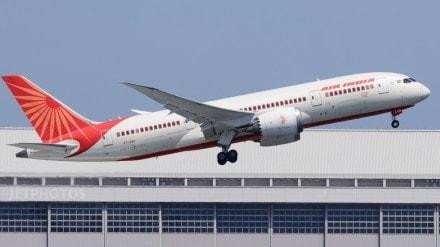Another Boeing is at the centre of a major tragedy. This time, an Air India Boeing 787-8 Ahmedabad to London flight crashed minutes after take-off. 242 passengers from India, Portugal, UK and Canada were onboard the fatal Air India flight AI 171 on June 12.
Boeing 787-8 Dreamliner is known for being modern and fuel-efficient. However, the aircraft has faced many problems in recent years, including safety issues, poor manufacturing quality and faulty parts. This crash has once again raised serious questions about Boeing and the safety of its Dreamliner planes. The stock crashed soon after the news was reported.
All you need to know about Boeing 787-8 Dreamliner
The Boeing 787-8 is the first variant of the 787 Dreamliner family. It was officially launched in 2004, with its maiden flight on December 15, 2009 and entered commercial service in October 2011 with All Nippon Airways (ANA). The 787-8 typically seats between 210 and 248 passengers in a two-class configuration and offers a range of about 7,305 nautical miles (13,530 kilometers). It enables airlines to operate both short and long-haul routes efficiently.
A key innovation of the 787-8 is its extensive use of composite materials, which make up about 50% of the primary structure, including the fuselage and wings. This composite construction reduces the aircraft’s weight significantly compared to traditional aluminum designs, resulting in improved fuel efficiency and lower operating costs.
The fuselage is constructed from one-piece composite barrel sections instead of multiple aluminum sheets, reducing the number of fasteners and enhancing structural integrity. The aircraft features a length of 186 feet (57 meters), a wingspan of 197 feet (60 meters), and a height of about 56 feet (17 meters).
Engines and performance
The 787-8 is powered by two high-bypass turbofan engines: either the General Electric GEnx or the Rolls-Royce Trent 1000. These engines provide thrust ranging from 53,000 to 75,000 pounds and contribute significantly to the aircraft’s approximately 20% better fuel efficiency compared to older models like the Boeing 767.
The aircraft cruises at a speed of Mach 0.85 (about 903 km/h or 488 knots) and can reach a maximum takeoff weight of approximately 502,500 pounds (227,930 kilograms). It has a maximum range of 7,305 nautical miles (13,530 km), allowing it to connect distant city pairs without the need for stopovers.
Controversies surrounding the Boeing 787-8 Dreamliner
Despite its technological advancements, the Boeing 787-8 Dreamliner has faced several controversies, primarily related to manufacturing quality and safety concerns. Since around 2019, Boeing has been under scrutiny for significant quality control issues at its North Charleston plant. These problems included loose seats, improperly installed pins, nuts and bolts not fully tightened and unsecured fuel-line clamps, which led airlines like KLM to criticise the manufacturing standards as “way below acceptable standards”.
Further compounding Boeing’s troubles, Italian authorities launched a criminal investigation into two aerospace suppliers accused of providing substandard titanium and aluminum alloys used in the 787’s manufacturing. This raised serious questions about Boeing’s supply chain controls and the overall safety and integrity of the Dreamliner program.
Recent notable incidents involving the Boeing 787-8 Dreamliner
United Airlines Flight UA613 incident (January 24, 2025)
A United Airlines Boeing 787-8 experienced a sudden loss of altitude while flying over Côte d’Ivoire due to the failure of both Inertial Reference Units (IRUs). This caused violent altitude shifts, injuring 38 people onboard (including 16 seriously). The aircraft returned safely to Lagos, Nigeria. The National Transportation Safety Board (NTSB) investigated the incident and attributed it to the IRU failures.
United Airlines Boeing 787-8 rapid altitude shift (January 24, 2025)
Related to the above, this event involved a rapid altitude excursion over West Africa resulting in injuries to passengers and crew. The autopilot disconnected and the pilots manually controlled the aircraft during the upset. The incident was linked to technical failures rather than turbulence.
British Airways Boeing 787 nose gear incident (June 18, 2021)
A British Airways 787-8 suffered significant damage when its nose struck the ground while parked at Heathrow Airport due to an engineering fault involving incorrect installation of the downlock pin. This incident caused minor injuries to the co-pilot and cargo crew but did not involve a crash.
Other safety incidents and technical malfunctions
While not crashes, there have been multiple reports of technical malfunctions such as hydraulic leaks, flap issues and emergency landings involving the 787-8 in recent years. These events have raised concerns about manufacturing quality and maintenance but have not resulted in fatal accidents
